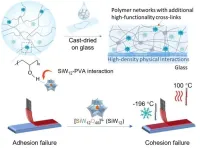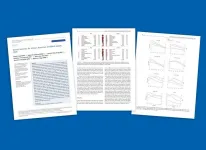Water-based adhesives face several challenges despite their environmental benefits. One major issue is that achieving high adhesion strength on various substrates, especially in wet or humid conditions, is difficult due to the inherent properties of water-based systems. Additionally, the volatility of water also leads to issues like bubble formation and uneven drying, affecting the adhesive's performance and appearance. Moreover, formulating water-based adhesives with both high solids content and low viscosity is technically demanding, as it requires a delicate balance of ingredients to achieve the desired properties without compromising the adhesive's stability. These challenges need to be addressed to fully realize the potential of water-based adhesives in various industrial applications.
A team of material scientists led by Kun Chen from South China University of Technology in Guangzhou, China, recently have achieved a significant breakthrough in adhesive technology by developing POT-PVA nanocomposites. These nanocomposites are created by combining polyvinyl alcohol (PVA) with 1-nm Keggin-type polyoxotungstate clusters (POTs) that carry four negative charges. The resulting material exhibits exceptional adhesion to hydrophilic surfaces, with high crosslinking densities and fracture energies exceeding 6.23 kJ·m−2. The POTs' chaotropic effect reduces PVA crystallinity, enhancing polymer chain dynamics and conferring robust adhesive properties across a wide temperature range from −196 to 100 °C. This innovation addresses key challenges in water-based adhesives, offering a promising solution for eco-friendly, versatile, and durable adhesives suitable for diverse applications and extreme conditions.
The team published their research in Nano Research on January 6, 2025.
"This breakthrough addresses key challenges in water-based adhesives, such as slow drying speed, weak adhesion strength in wet conditions, and difficulties in achieving high solids content with low viscosity," said Kun Chen, the principal investigator of the study, associate professor in the School of Emergent Soft Matter at South China University of Technology. "Our POT-PVA nanocomposites not only overcome these limitations but also set new standards for eco-friendly, versatile, and durable adhesives suitable for a wide range of applications and extreme conditions."
POTs exhibit a wide range of shapes and sizes, from simple spherical clusters to more complex, cage-like structures. Keggin-type POTs are highly stable, both thermally and chemically, and can function as redox-active species, catalysts, and even as building blocks for supramolecular assemblies. Their tunable properties and ability to interact with various substrates make them valuable in fields such as materials science, catalysis, and sensing technologies. The chaotropic effect of Keggin-type POTs reduces PVA crystallinity, enhancing polymer chain dynamics. This not only improves adhesion but also maintains the flexibility and durability of the adhesive.
The demand for high-performance, eco-friendly adhesives has been growing across various industries. Traditional adhesives often struggle to maintain their performance under extreme conditions, limiting their applications. This research addresses these challenges by developing a novel nanocomposite that combines the benefits of PVA with the unique properties of POTs. POT-PVA nanocomposites exhibit robust adhesive properties across an unprecedented temperature range, from −196 to 100 °C. Their thermostability makes them ideal for use in extreme environments, such as cryogenic and high-temperature applications.
The development of these POT-PVA nanocomposites has far-reaching implications. POT-PVA nanocomposites introduced in this research offer a glimpse into a future where adhesives can perform exceptionally well under extreme conditions, while also being environmentally sustainable. They could revolutionize industries such as construction, automotive, aerospace, and electronics by providing adhesives that can withstand extreme conditions. Additionally, the eco-friendly nature of these adhesives aligns with global efforts to reduce environmental impact.
Other contributors include Pengcheng Cui, Qiang Yu, Jiadong Chen, and Panchao Yin from the School of Emergent Soft Matter at South China University of Technology, China.
This work was supported by the National Natural Science Foundation of China (No. 22101086) and Guangdong Basic and Applied Basic Research Foundation (Nos. 2023A1515140030 and 2024A1515030212).
About the Authors
Dr. Kun Chen is a full associate professor in the Faculty of School of Emergent Soft Matter, South China University of Technology, China. Her research interests focus on the field of materials science, with a particular focus on the development and application of advanced nanocomposite materials based on polyoxometalates. Until now, she has published more than 60 papers in Nano Research and other journals, presided over 5 national/provincial scientific research projects, owns 10 invention patents. For more information, please pay attention to her research homepage https://www2.scut.edu.cn/SESM/2022/0919/c33012a481141/page.htm.
About Nano Research
Nano Research is a peer-reviewed, open access, international and interdisciplinary research journal, sponsored by Tsinghua University and the Chinese Chemical Society, published by Tsinghua University Press on the platform SciOpen. It publishes original high-quality research and significant review articles on all aspects of nanoscience and nanotechnology, ranging from basic aspects of the science of nanoscale materials to practical applications of such materials. After 17 years of development, it has become one of the most influential academic journals in the nano field. Nano Research has published more than 1,000 papers every year from 2022, with its cumulative count surpassing 7,000 articles. In 2023 InCites Journal Citation Reports, its 2023 IF is 9.6 (9.0, 5 years), and it continues to be the Q1 area among the four subject classifications. Nano Research Award, established by Nano Research together with TUP and Springer Nature in 2013, and Nano Research Young Innovators (NR45) Awards, established by Nano Research in 2018, have become international academic awards with global influence.
About SciOpen
SciOpen is an open access resource of scientific and technical content published by Tsinghua University Press and its publishing partners. SciOpen provides end-to-end services across manuscript submission, peer review, content hosting, analytics, identity management, and expert advice to ensure each journal’s development. By digitalizing the publishing process, SciOpen widens the reach, deepens the impact, and accelerates the exchange of ideas.
END




